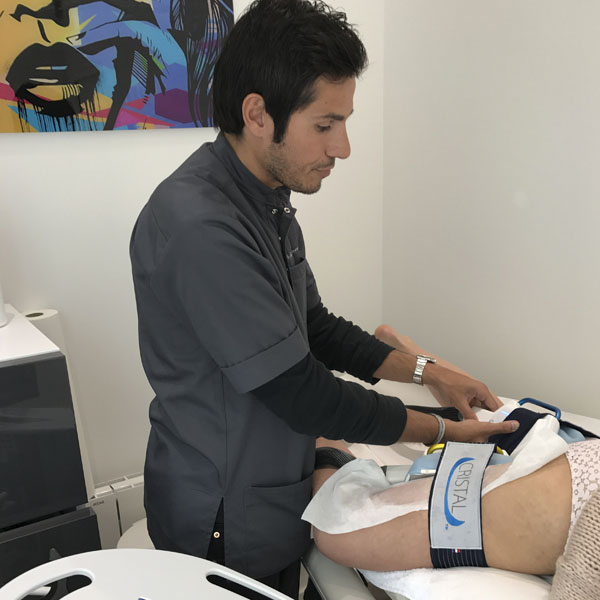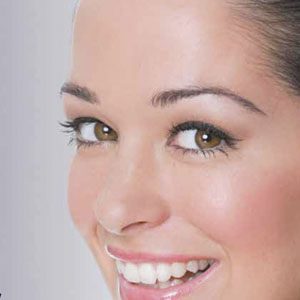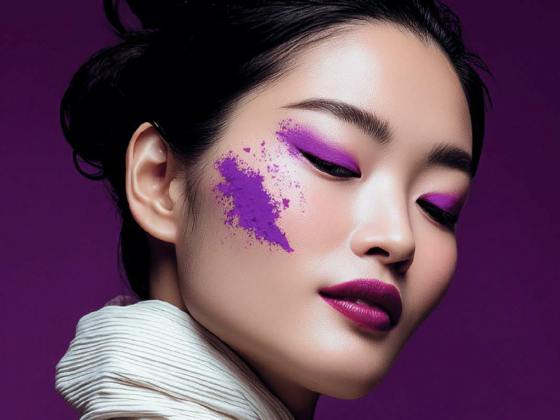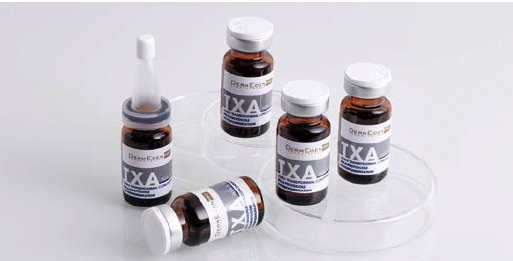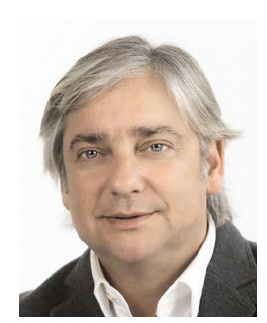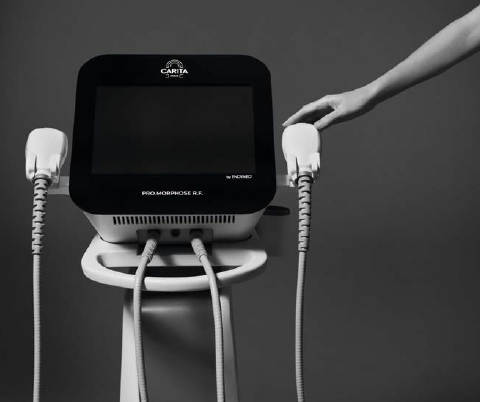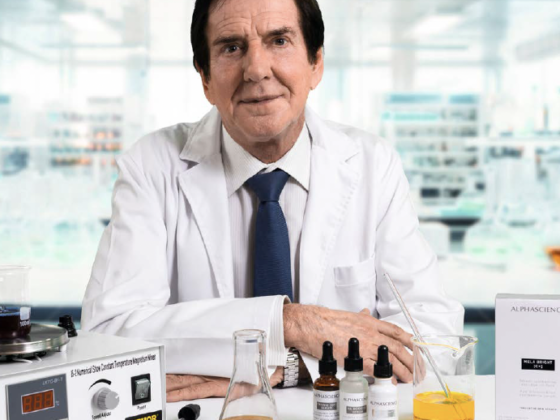By Doctor Nicolas Bachot
The treatment of pigmentation marks is a common request. Treatment must primarily be medical, so that an accurate diagnosis can be made and to rule out any cancerous lesions (Hutchinson’s melanotic freckle). Only afterwards can aesthetic treatment be considered. Solar lentigos (liver spots) and melasma are the most common diagnoses.
The first stage involves making an accurate diagnosis of the pigmentation mark(s). These marks are very common, and can have many different aetiologies. The main aetiologies are solar lentigos for isolated lesions and melasma for more widespread pigmentation. 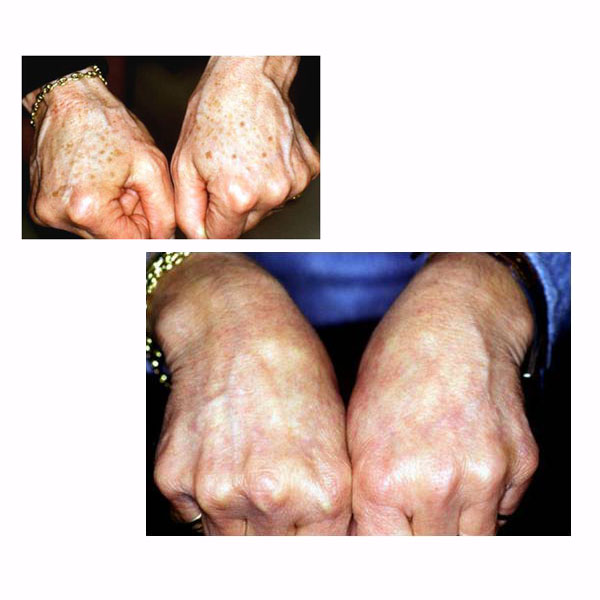
SOLAR LENTIGOS
Clearly-defined light to dark brown spots, also called benign lentigos, age spots, liver spots or even senile freckles. They are characteristic of repeated chronic sun exposure and affect all skin types: it is estimated that 90% of all white-skinned people have at least one age spot by the age of 50.
Treatment:
Q-switched lasers are the go-to method. One session is usually enough. The darker the mark, the easier it is to erase. The downside to this treatment is the risk of inflammation and the scabs, which are difficult to hide and last 10 to 15 days.
KTP lasers can be used on superficial vascular lesions instead of the Q-switched laser, but are more painful.
Intense Pulsed Light (or IPL) is the alternative treatment. Often two sessions are required for it to be as effective as the Q-switched laser. The advantage of this technique is that it can simultaneously treat brown marks and rosacea. The arguments for choosing this treatment are that it is less inflammatory and the after-effects are more easily camouflaged. IPL is also recommended if there are numerous marks to treat and if the areas to treat are very spread out.
Cryotherapy (liquid nitrogen) is a highly effective treatment but there is a higher risk of depigmented scars. It is better to use it on a limited number of lesions. Its low cost and immediate availability in dermatologists’ surgeries make it a widely-used technique.
Superficial peels must be repeated numerous times to achieve good results. Medium peels (30% TCA) are more effective but riskier (especially on dark skin).
Cosmetic treatments. Though people are now in the habit of applying sun protection during the summer months, they still need reminding that their skin needs protecting from involuntary exposure every day. Depigmenting cosmetics are generally not strong enough to erase solar lentigos on their own. However, they are essential for primary and secondary prevention (after laser treatments).
THE TWO TRICK DIAGNOSES OF BENIGN LENTIGOS
1-Seborrheic keratosis
On their own or in a group, these lesions can be found in the seborrheic areas of the face, décolletage and hands, just like solar lentigos. They can be diagnosed thanks to their thicker nature and lighter colour than solar lentigos.
Dermatoscopy shows that this is a non-melanocytic lesion. Cryotherapy is the go-to treatment for seborrheic keratosis.
2-Malignant lentigo or Hutchinson’s melanotic freckle
The clinical appearance of this lesion is characterised by its uneven shape, darker areas, raised surface and slight infiltration. Almost exclusively found on the face, this is the usual diagnosis when lentigos keep coming back after cryotherapy or laser treatment. Often, only studying the cells taken in a biopsy or excision can confirm this diagnosis, though dermatoscopy can also help. Treatment involves surgery, though in very superficial cases cryotherapy and imiquimod can be effective.
In women, pigmentation marks can mainly be found on the forehead, cheeks and upper lip. This pigmentation usually fades or even disappears completely during the winter, becomes more prevalent in summer, and can last for years. All skin types can be affected.
Its treatment is long and laborious. Involuntary exposure to UV rays for just a few minutes can cause pigmentation that can last for several months. It is therefore almost impossible to get rid of it in summer. During this period, high-factor sun protection (SPF 50) is required, along with depigmenting cosmetics (Day Protocole creams, DermEden).
The Klingman trio (hydroquinone, retinoic acid, dermocorticoid) is still the go-to treatment, but should only be used for 3 months. The various depigmenting cosmetics available, which are generally just as effective, can be used for the other 9 months of the year.
The results of laser treatments are still disappointing for this problem, and they can sometimes cause reactional hyperpigmentation. However, the vascular part of some melasma can be improved using IPL.
There are no definitive melasma treatments, so patients are strongly advised to continue using sun protection, even if the marks have faded or been erased, as they could come back the following summer.
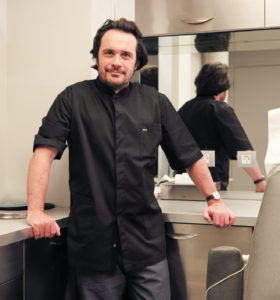 Doctor Nicolas Bachot
Doctor Nicolas Bachot
Freelance dermatologist, former clinic head for the Paris hospitals, anti-aging specialist practising in Paris. He has been an advisor for the cosmetics industry for the last 15 years and a tutor for the French interuniversity degree in Aesthetic Dermatology since 2005. He is also the scientific director for DermEden Laboratories.




